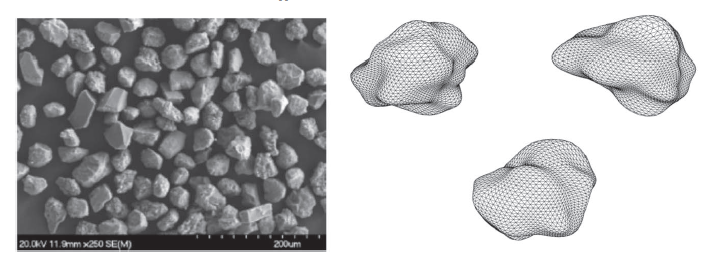Astrophysical Journal Supplement Series (2023); http://dx.doi.org/10.3847/1538-4365/acf0be
J. Martikainen, O. Muñoz, T. Jardiel, J. C. Gómez Martín, M. Peiteado, Y. Willame, A. Penttilä, K. Muinonen, G. Wurm, and T. Becker
We present an advanced light-scattering model to retrieve the optical constants of three Martian dust analogs: Johnson Space Center regolith simulant, Enhanced Mojave Mars Simulant, and Mars Global Simulant. The samples are prepared to have narrow particle-size distributions within the geometric-optics domain. We carry out laboratory measurements to obtain the particle-size distributions, shapes, and diffuse reflectance spectra of the Martian analogs deposited on a surface. Our model framework includes a ray-optics code to compute scattering properties for individual particles, and a radiative-transfer treatment to simulate the surface. The irregular shapes of the dust particles are taken into account in the model. We compare our derived imaginary parts of the refractive indices with those in the literature and find that they are much smaller than the ones that are commonly used for Martian dust. A sensitivity study shows that the retrieved optical constants are sensitive to the particle shape, which needs to be accounted for in applications that use different shapes. Finally, the derived values are validated by using them to reproduce the reflectance spectrum of the Martian surface regolith as observed by the Nadir and Occultation for Mars Discovery instrument on board the ExoMars mission.

GRS1 particles used in the model (right) compared to the MMS-2 FESEM image (left).

